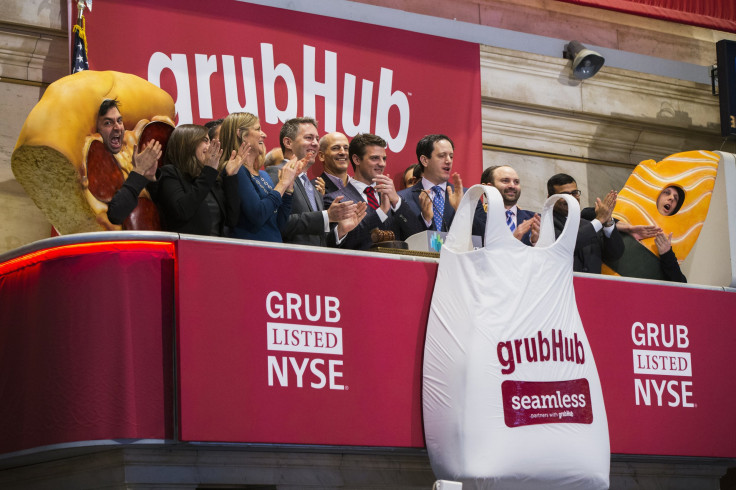4 Reasons Grubhub Investors Shouldn't Fear DoorDash

Grubhub (NYSE:GRUB) is still the leading third-party food delivery service in America, according to Second Measure's latest market share figures. The company claimed 32% of the market in March, compared to 30% for DoorDash, 21% for Uber (NYSE:UBER) Eats, 10% for Postmates, and 7% for everyone else.
In the report, Second Measure also notes that DoorDash, which overtook Uber Eats as the second-largest service in late 2018, grew its sales 216% year over year in March -- versus Grubhub's 4% growth and Uber Eats' 58% growth.
DoorDash's growth is often cited in bearish cases against Grubhub -- which lost nearly 40% of its stock value over the past 12 months on concerns about tougher competition, slowing growth, and higher spending. However, I believe Grubhub investors shouldn't fear DoorDash for four simple reasons.
1. Overlapping users
Second Measure noted that Grubhub, DoorDash, and Uber Eats all serve a large number of overlapping customers. During the first quarter, 20% of Grubhub's users also used DoorDash and 16% used Uber Eats.
Twenty-one percent of DoorDash's customers also used Grubhub, while 21% used Uber Eats. As for Uber Eats' customers, 21% also used Grubhub and 24% used DoorDash.
These numbers indicate that exclusive partnerships -- like Grubhub's partnership with Yum Brands, DoorDash's partnership with The Cheesecake Factory, and Uber Eats' deal with McDonald's -- are preventing the platforms from locking in users.
Therefore, if Grubhub leverages its position as the country's top delivery platform to win more exclusive partnerships, it can widen its moat against DoorDash and maintain its market share.
2. Growth matters more than market share
Grubhub's market share of 32% marks a big drop from its 57% share last March. DoorDash's share rose from 17% to 30% during the same period, but that marks a slight dip from 31% this January, suggesting that its meteoric growth is finally peaking.
However, the individual growth of these companies matters more than month-to-month market share figures, since there's likely enough room for them to each expand without trampling each other. An examination of Grubhub's growth in daily average grubs (meals), gross food sales, active diners, and revenue over the past year indicates that the company is still rapidly growing.
Grubhub expects its revenue to rise 31%-42% this year. That's a slowdown from its 47% growth in 2018, but it indicates that the company still has plenty of room to grow alongside DoorDash and Uber Eats.
3. Preferences are regional
Second Measure also found that customer preferences for Grubhub, DoorDash, and Uber Eats were also clearly defined across certain regions.
Grubhub dominates New York City with a 69% share of total delivery spending, and it's also the market leader in Chicago with a 40% share. DoorDash is the strongest in San Francisco, where it holds a 45% share, and Texas, where it controls 48% and 51%, respectively, of the Dallas-Fort Worth and San Antonio markets. Uber Eats is the market leader in Miami, where it controls 58% of the market, and Atlanta, where it holds a 45% share.
The fragmentation of this market across different regions, along with the platforms' overlapping customer bases, indicates that it's practically impossible for one of the three market leaders to wipe out the others.
4. Grubhub actually makes money
Most importantly, Grubhub is more profitable than both DoorDash and Uber Eats. Grubhub remains consistently profitable by both GAAP and non-GAAP metrics -- even after it ramped up its spending dramatically over the past year to acquire smaller rivals, improve its logistics, expand its digital ecosystem, and launch new marketing campaigns.
Last December, DoorDash claimed that it was "profitable" after excluding overhead expenses like salaries and rent. In other words, it was generating a slim gross profit but still racking up operating losses. Uber warned that it might never achieve profitability, and it's burning cash in both its ride-hailing and food delivery markets.
Grubhub's take rate, or the percentage of a transaction it retains as revenues, is also rising -- which indicates that it has better pricing power than its rivals. Therefore, Grubhub probably isn't too worried about its unprofitable rivals overtaking it anytime soon.
The bottom line
Grubhub is spending lots of money, but its core business is stable. Customers aren't being locked into single platforms and there's still room for all these services to grow, but Grubhub remains a "best-in-breed" play in this growing market.
This article originally appeared in The Motley Fool.
Leo Sun owns shares of Grubhub. The Motley Fool recommends Grubhub. The Motley Fool has a disclosure policy.





















